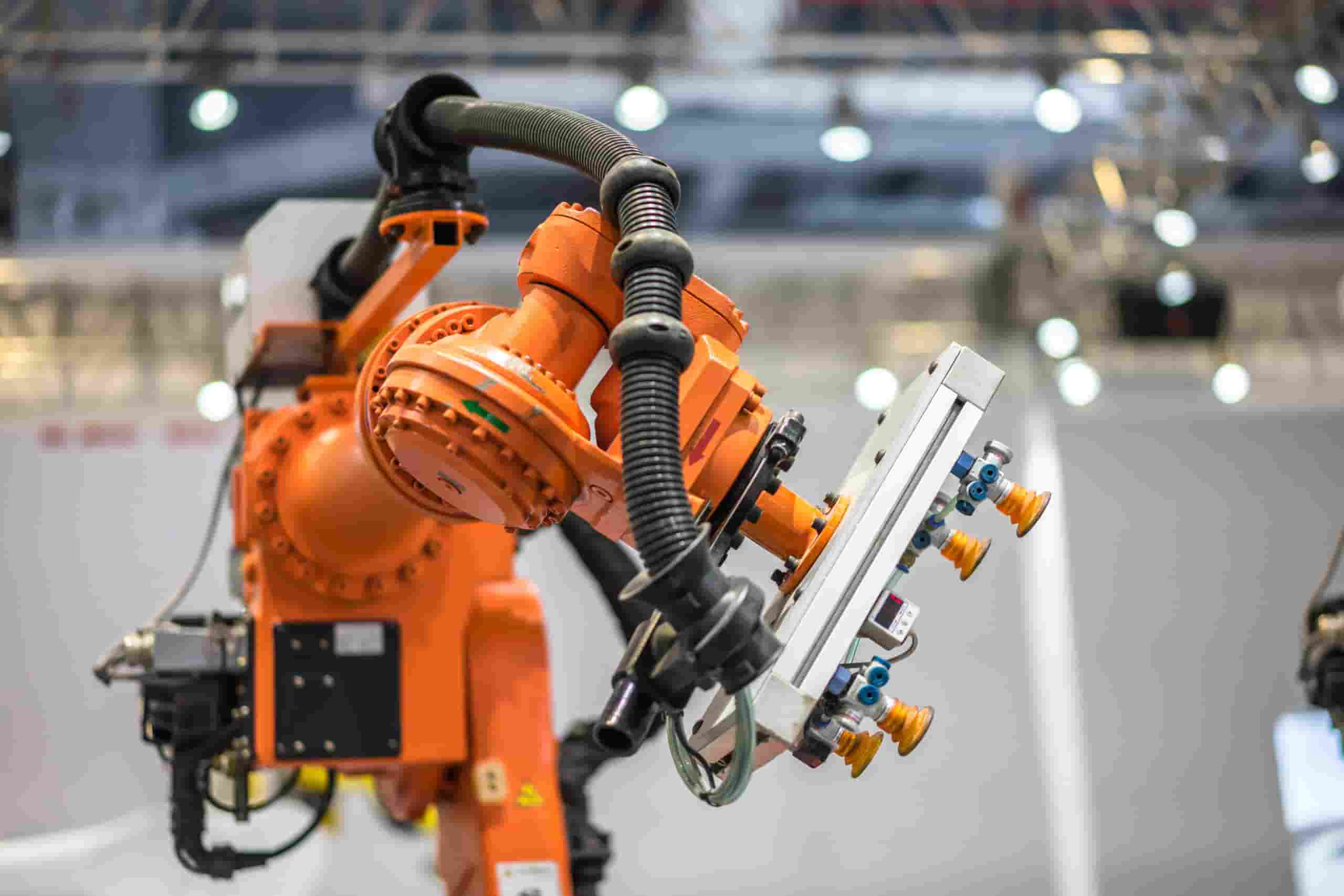This month, we interviewed Maria Araujo from ARM Institute Member Johnson & Johnson (J&J)! Maria has participated in ARM Institute funded projects. In this piece, she shares the ways J&J cultivates stakeholder agreement on robotics solutions, future developments that she is excited about, how robotics helps the workforce, and more!
Maria also recently hosted a member-exclusive Tech Talk on Re-Imagining the Supply Chain of the Future. This Tech Talk recording is available to ARM Members only in the Member Community. Log in here or email [email protected] for more information.

1. From our work with you, J&J seems to have a lot of stakeholder buy-in on robotics solutions. How do you cultivate internal agreement on strategic direction across different types of stakeholders?
First and foremost, we always start with the opportunity for the patients and customers we serve – in line with Our Credo. We also explore whether the innovation will contribute business value for all stakeholders involved. If the business case is not there or is not clear enough, engagement will be difficult to build. If the need or opportunity is clear as well as its business value, stakeholder buy-in will be organic.
As a supply chain innovation team, we align our robotic strategy directly to the opportunities across each of our three business segments (Med Tech, Pharmaceuticals and Consumer Health), with clear connections of how each project or initiative is solving a step or a piece of the overall customer need. We have a phased innovation model (Define, Explore, Develop, Test and Scale) that we leverage to ensure our innovations are grounded on real needs – the Define phase, in particular, is focusing on defining the need/opportunity with our business segments, as well as the business case. With that, we ensure not only stakeholder engagement, but also strategic alignment of our robotics innovation with our overall business strategic priorities.
2. One myth is that robots are taking jobs away from humans. How do you see robots working with humans at J&J? What is the benefit to current workers?
Robots are enabling the automation of highly repetitive tasks, which in turn allows workers to focus and work on more complex or higher value tasks. Additionally, robots are helping further enhance ergonomics by removing tasks that require extensive repetitive human movement, as well as movements that could pose other ergonomic risks (e.g. heavy lifting, placement/removal of items from low or high areas, etc.). Finally, robotic innovations are unlocking new opportunities for employees to develop analytical capabilities and new digital skills.
3. Can you share some of the robotics solutions that have provided the most benefit to J&J?
We have various robotics solutions deployed within our supply chain and operations, both within manufacturing and distribution. On the manufacturing side, robotics are automating repetitive processes and bringing with them greater consistency. We also have an initiative called Flexible Mobile Manufacturing Systems (FMMS), which is focused on developing modular robotic components that can be put together in different ways to manufacture different products and variations, adapting to changes in production demands.
On the distribution side, we have various applications in pallet and shelf picking for our distribution centers (DCs). We are also developing robotic picking technologies for order fulfillment. The power of the technology is how quickly it can adapt to a variety of different products, including different shapes and sizes. This is helping us create a resilient supply chain that can adjust to sudden changes in product demand and other external disruptions.
4. Can you tell us more about your background? How did you get started in the robotics industry?
I started my career at Honeywell Aerospace in Torrance, CA working on controllers for electric motors for commercial and military aircraft. I then joined Southwest Research Institute (SwRI) in San Antonio, TX, where I led a team focused on embedded systems and advanced inspection systems for space, aerospace and energy industries. At SwRI, a big focus for me was on the development of perception systems (using sensors and machine learning) to automate inspection activities for the oil & gas industry, such as leak detection. As such, my interests were focused on the perception (sensing + algorithm) aspects of robotics.
After moving to Johnson & Johnson to lead our Supply Chain Sensing and IoT innovation team, I have been collaborating closely with our supply chain robotics team as we bring more perception and intelligence to our robotic solutions.
5. What are some robotic advancements that you think will be most impactful in the next five years?
The growth in power and maturity of AI will likely be one of the leading factors of advancements in robotics in the next few years. AI is already significantly advancing robotics. Until not too long ago, commercial robots were limited to performing tasks with little variations, like moving pallets along fixed paths and picking items with predictable, many times, pre-determined shapes. With advancements in AI, robots can now manipulate and pick items of various shapes and sizes and deal with unpredictable obstacles and scenarios. These capabilities will continue to evolve such that robots will be able to handle increasingly more complex tasks.
Another key factor in the advancement of robotics in the coming years will be emerging materials and embedded sensors. New materials and advanced sensors (e.g. magnetic position, presence, gesture, force torque, tactile, environmental, sound, chemical, temperature sensors) will enable various advanced sensing and handling capabilities to robots that, when combined with AI, will enable robots to continue to evolve their perception capabilities and therefore, significantly broaden the applications they can handle and exponentially increase the complexity of the tasks they can perform.
Don’t miss another update from the ARM Institute!
Join our Mailing List here.
About the ARM Institute
The ARM (Advanced Robotics for Manufacturing) Institute is a Manufacturing Innovation Institute (MII) funded by the Office of the Secretary of Defense under Agreement Number W911NF-17-3-0004 and is part of the Manufacturing USA® network. The ARM Institute leverages a unique, robust, and diverse ecosystem of 330+ consortium members and partners across industry, academia, and government to make robotics, autonomy, and artificial intelligence more accessible to U.S. manufacturers large and small, train and empower the manufacturing workforce, strengthen our economy and global competitiveness, and elevate national security and resilience. Based in Pittsburgh, PA since 2017, the ARM Institute is leading the way to a future where people & robots work together to respond to our nation’s greatest challenges and to produce the world’s most desired products. For more information, visit www.arminstitute.org and follow the ARM Institute on LinkedIn and Twitter.
